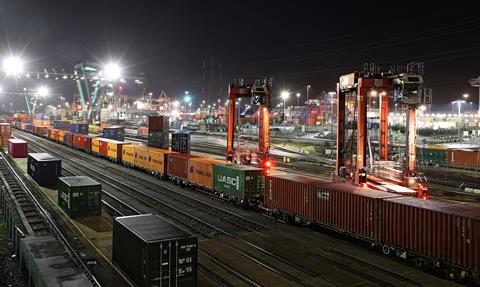Company’s second weekly service will double rail capacity between two of the largest container ports in the UK

DP World is launching a second weekly rail service to double the rail capacity between its ports at London Gateway and Southampton.
According to the logistics giant, the expansion will boost UK supply chain resilience and reduce carbon emissions, by cutting more than one million truck miles a year.
The new mid-week train service will be operated by Freightliner from 1 October, complementing the existing weekend service. It will give customers increased access to extensive storage and handling, freight forwarding, and delivery services.
The first weekly service between London Gateway and Southampton was launched in 2022, enabling swift and reliable freight transit between the two ports.
Customers using the new rail service can also benefit from DP World’s Modal Shift Programme, a financial incentive for customers to move import-laden containers via rail.
The programme has already boosted the share of rail freight at Southampton from 21 per cent to more than 30 per cent.
In addition to its hubs at Southampton and London Gateway, DP World’s offer includes logistics, forwarding, and European transport capabilities, all of which are being integrated into the company’s global network.
Vice president of commercial and supply chain at DP World UK, John Trenchard, said: “Launching a second rail service between London Gateway and Southampton is the next logical step for DP World, given the clear benefits for our customers.
“Providing a cleaner and more cost-efficient way to move cargo across the country is a key priority for DP World in the UK, and modal shift has consistently proven to be a reliable and flexible solution.”
Managing director of intermodal logistics at Freightliner Group, Chris Lawrenson, added: “Our fleet of rolling stock and carbon efficient trains provide customers with lower carbon options for their international container movements.”



